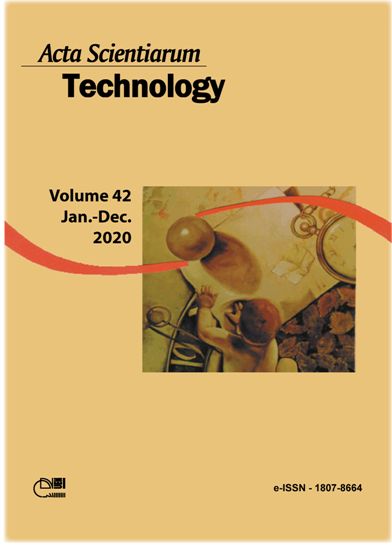Simulation-based analysis of AGV workload used on aircraft manufacturing system: a theoretical approach
DOI:
https://doi.org/10.4025/actascitechnol.v42i1.47034Keywords:
AGV, aircraft manufacturing, industry 4.0, simulation, industrial processAbstract
competitiveness in the aircraft manufacturing industry requires continuous improvement and modernization of its manufacturing processes, in order to keep the companies competitive in the market. In this context, the use of advanced manufacturing technologies and systems has been incessantly pursued to achieve productivity gains, sustainability and reduction of production costs, as well as being important in the individuals´ quality of life. Autonomous robotic systems such as Automated Guided Vehicles (AGVs) have been used on shop floor to assist the aggregation of these competitive advantages to the business. Coupled to the use of these vehicles, other technologies such as the internet, digital factory and cloud-computing have been integrated into manufacturing in direction of the so-called advanced manufacturing, or Industry 4.0. Thus, this work aims to apply the concepts of digital factory in an example of aircraft manufacturing system, to analyze the efficiency and workload of the AGVs that transport materials from the warehouse to the assembly stations. Based on a theoretical approach by discrete-event simulation method and guided by the principles of Industry 4.0, analysis related to needed amount of AGVs, cycle times, deliveries and downtime of the vehicles were performed for different situations. Thus, it searches for better results in terms of productivity and decision-making support regarding adding-value related to materials transporting and information over long distances, delays, waiting and unnecessary movement of workers, in order to obtain improvement and profits for the aircraft manufacturing system.
Downloads
Downloads
Published
How to Cite
Issue
Section
License
DECLARATION OF ORIGINALITY AND COPYRIGHTS
I Declare that current article is original and has not been submitted for publication, in part or in whole, to any other national or international journal.
The copyrights belong exclusively to the authors. Published content is licensed under Creative Commons Attribution 4.0 (CC BY 4.0) guidelines, which allows sharing (copy and distribution of the material in any medium or format) and adaptation (remix, transform, and build upon the material) for any purpose, even commercially, under the terms of attribution.
Read this link for further information on how to use CC BY 4.0 properly.



















8.png)




